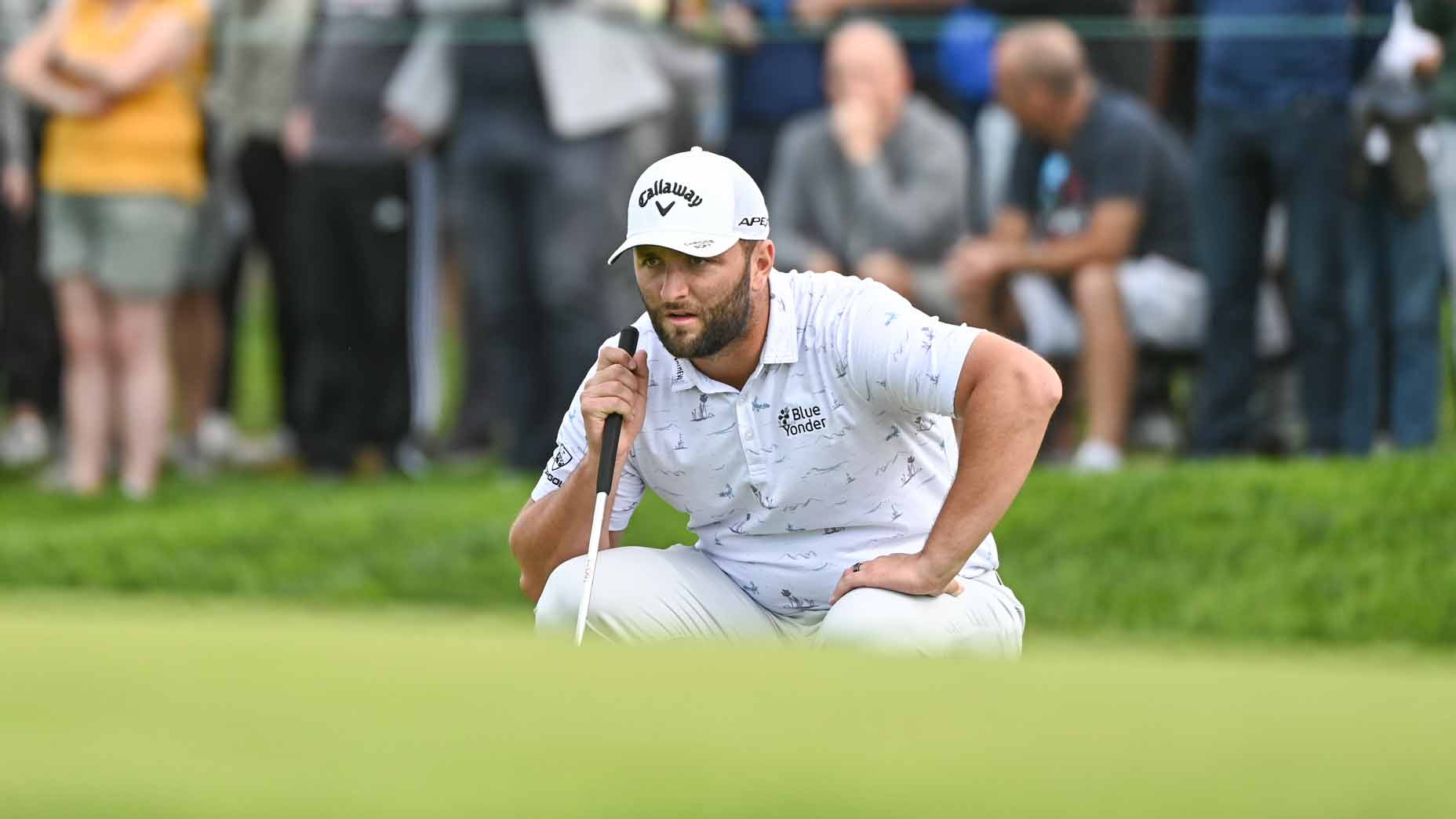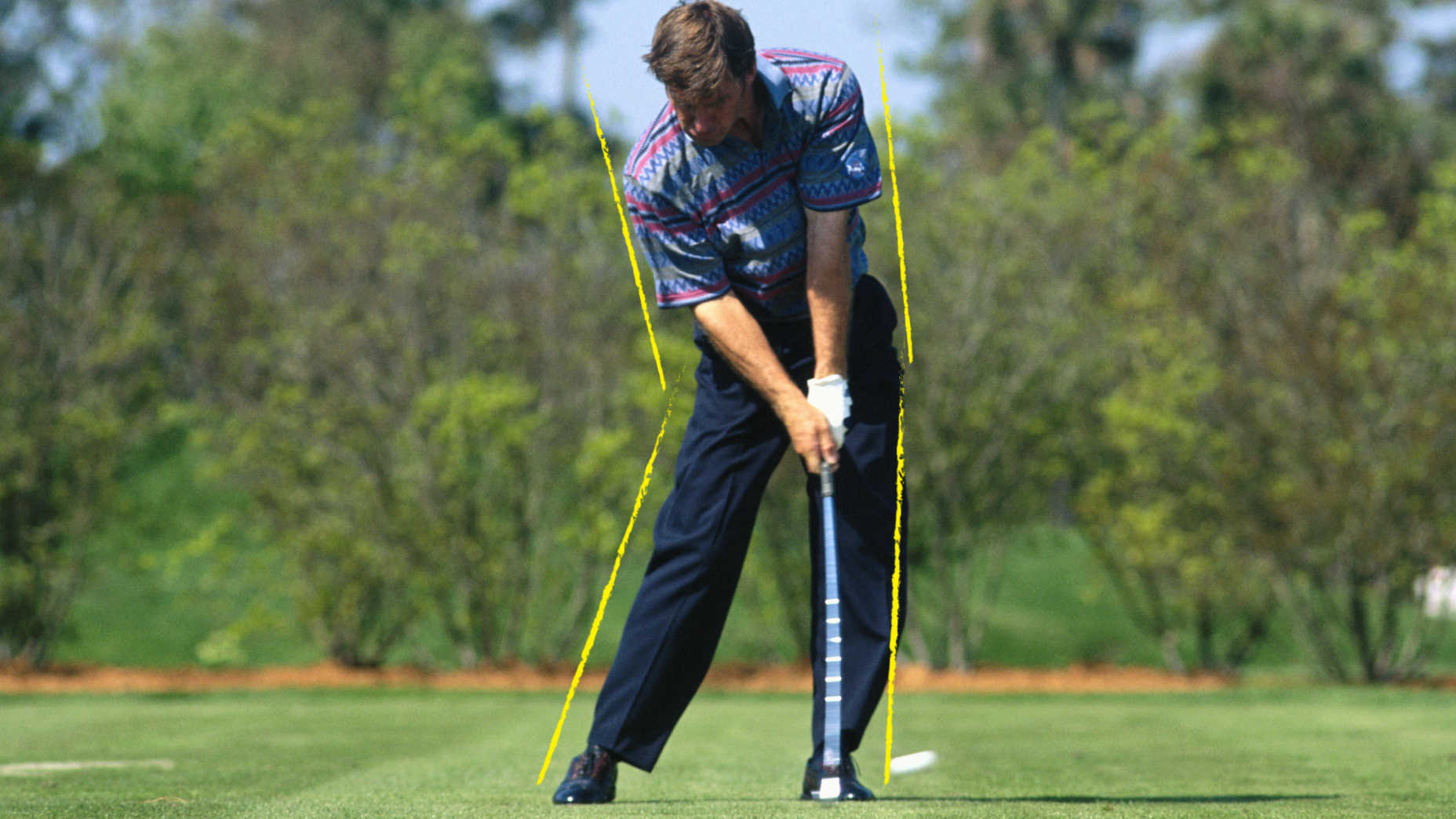
Finding your hitting angles at setup can help you hit better shots.
The setup is the most critical part of the golf swing. Players all too often work on the bits and pieces in the swing once the club is in motion, rather than first fixing flaws that happen from a static position. But more times than not, the origin to a player’s swing fault lies in the setup.
The benefit for players working on their setup is that it’s mostly talentless. Anyone can work on and perfect their setup if they understand a few concepts, regardless of handicap or skill level. It’s not a complicated movement, either: Your body isn’t in motion, your brain just need to tell it what to do.
To set up to the ball more efficiently, players should properly get into their hitting angles. A hitting angle, in a nutshell, is the general shape that your body will be at impact. If a player can preset where they’ll be at impact, it is easier to return to that efficient and dynamic position when they actually swing. That’s what makes hitting angles so valuable.
To start, The upper body should be slightly back behind the lower body. The lead side will be fairly straight with tuck in the trailside, and the lead hip will be slightly above the trail hip. Note the green highlights below.
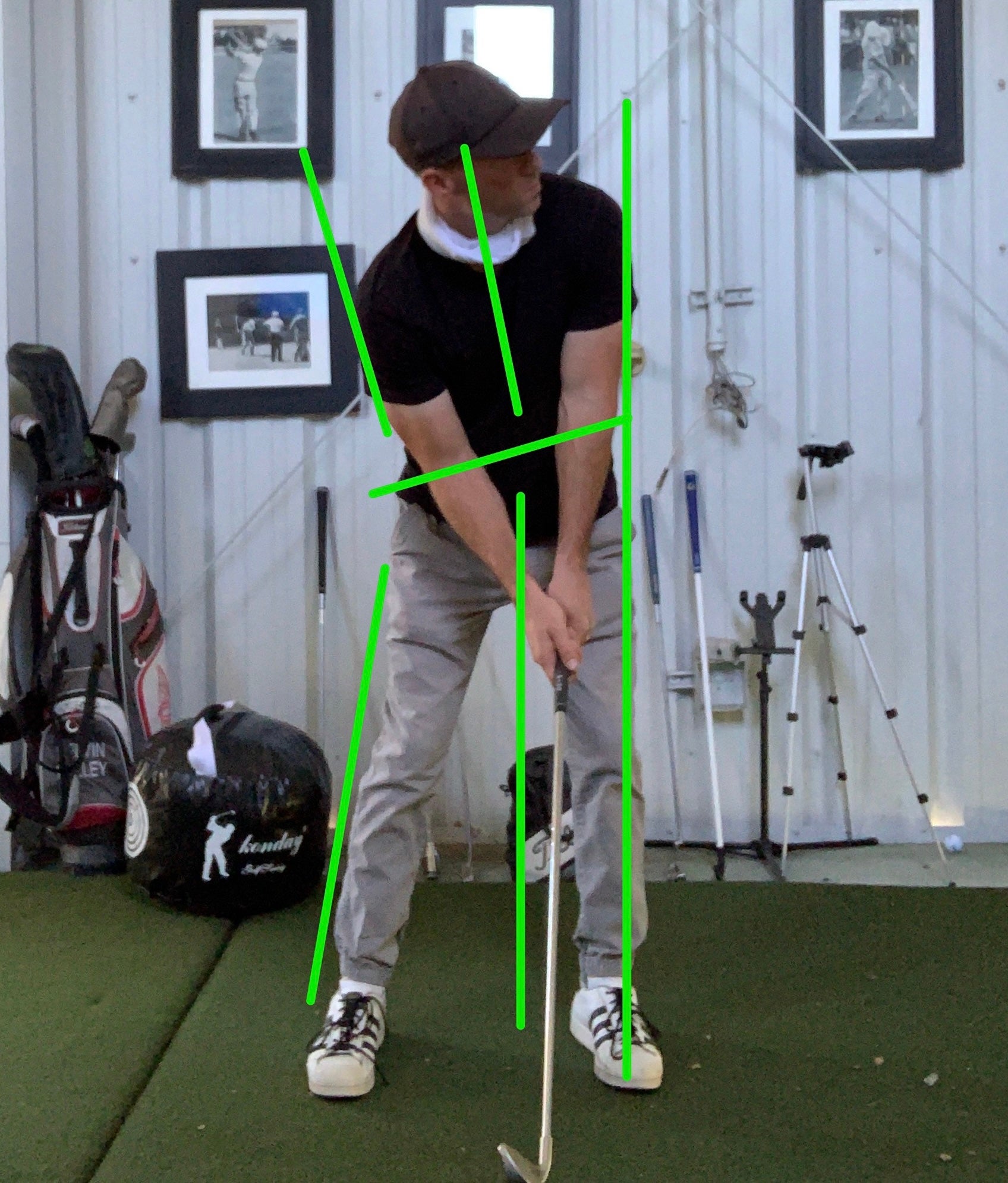
The lead hip is higher, and my upper body is tilted back
Proper arm structure is imperative as well. The player should have their trail arm bent and in front of them. The trail arm will be slightly below the lead arm and in a “pushing position.” This will also drop the trail shoulder below the lead shoulder.
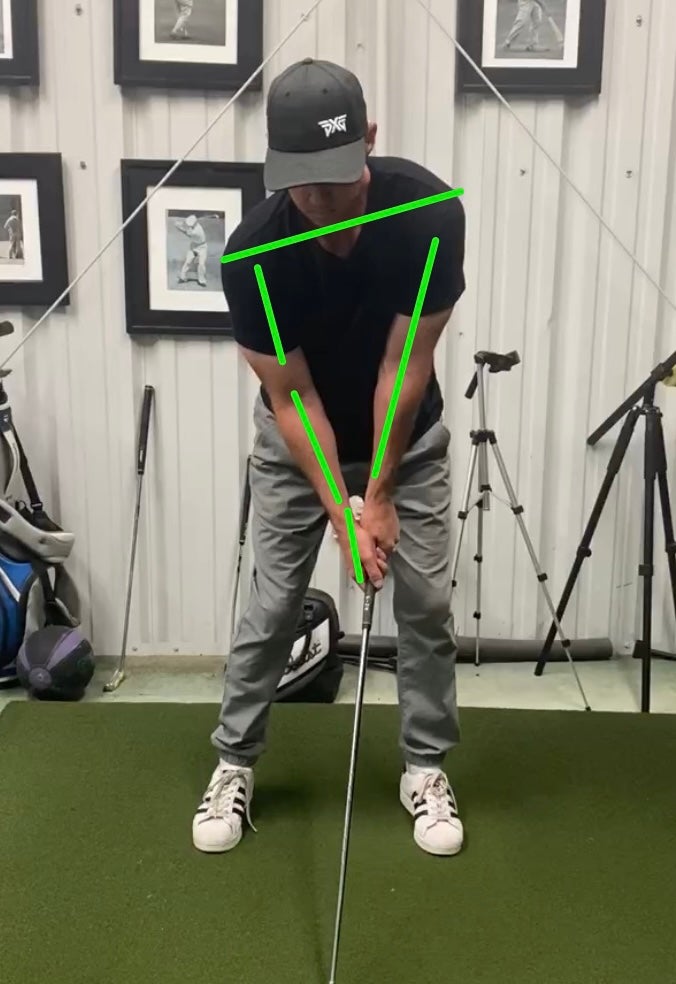
Tuck your trail arm and tilt your shoulders.
This is nothing new, by the way. Many of the greats from the past get into very similar positions, Peter Thompson and Jack Nicklaus to name a few.
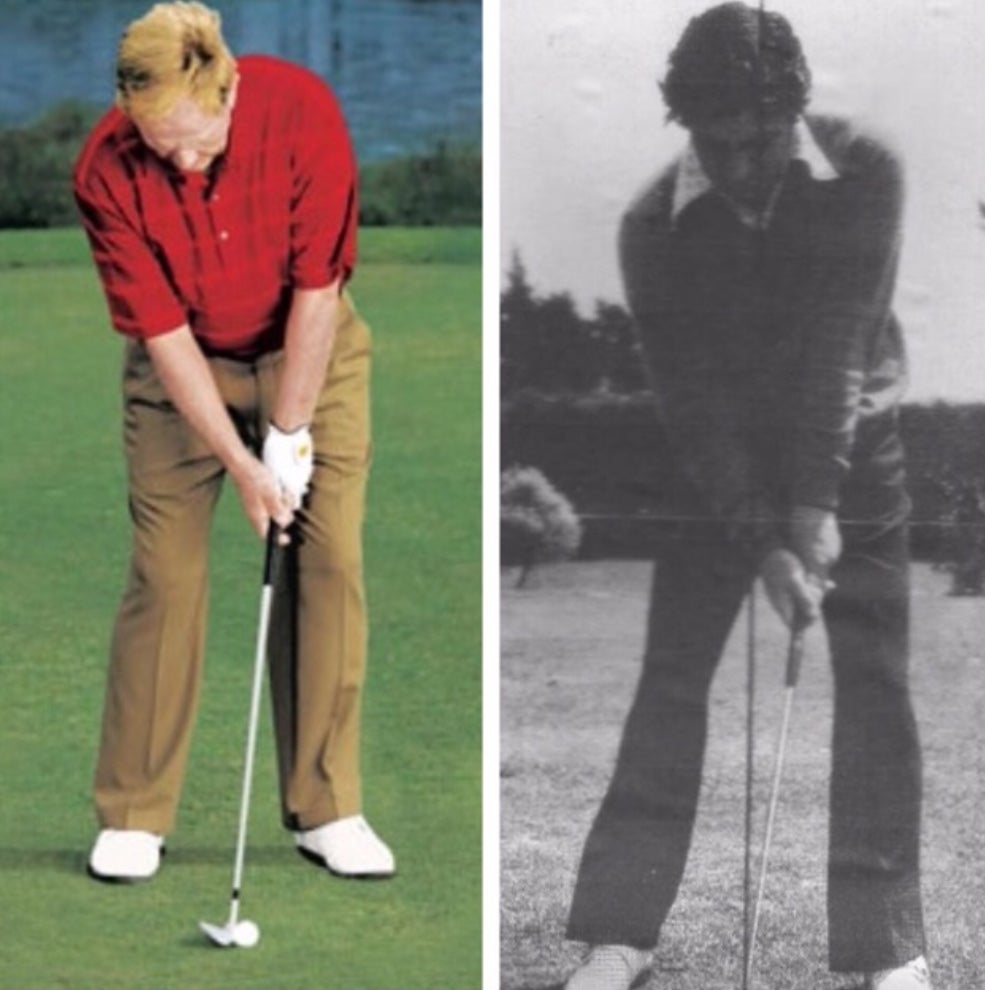
Many greats have gotten into this position.
Your final setup checkpoint is your trail wrist. With these body angles, the trail wrist can have angle to it as well. This enhances the pushing motion and is the desired angle in the trail wrist at impact, which allows a descending blow.

Push your trail hands towards the target to create a descending, pushing blow
The setup is the most easily controllable area of your swing, which is what makes it so important. Once you start correctly, the backswing is simply retaining your angles. The impact position is just a more dynamic version of your start position. This is a simple way to swing the golf club. Next time you’re in front of a mirror, look face-on and check your body position for these angles. Find your proper hitting angles, and you’ll be hitting better shots because of it.




